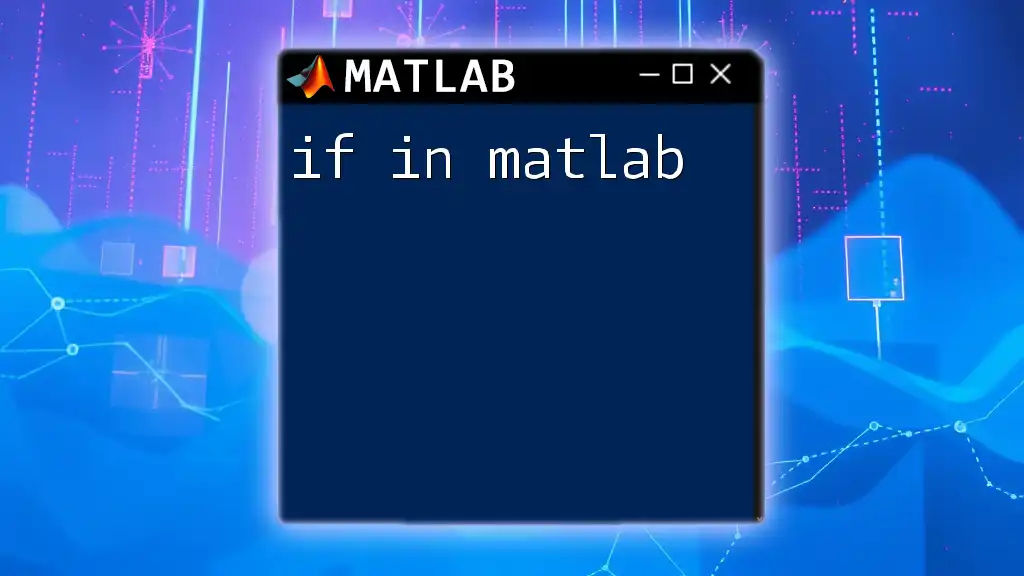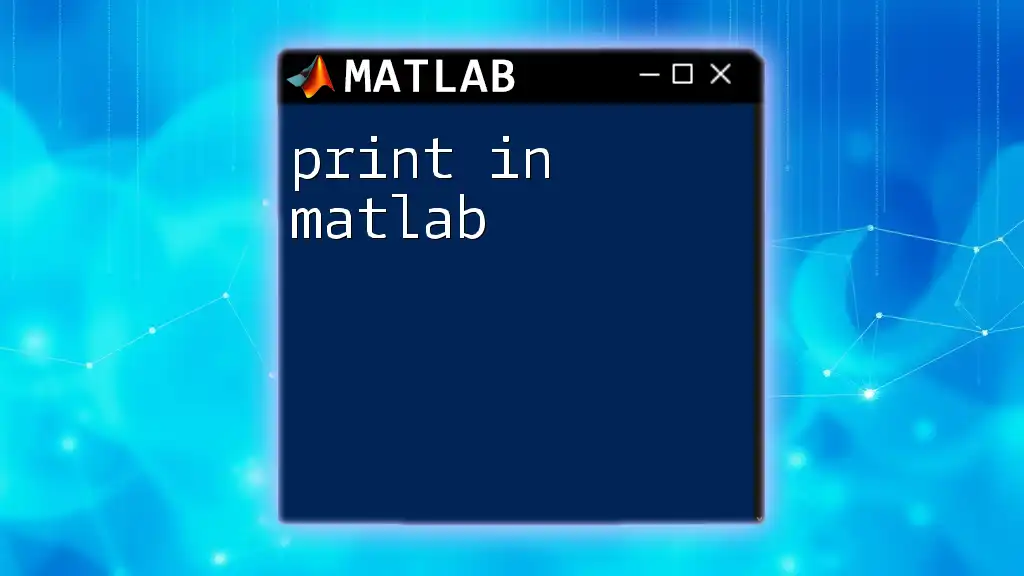The `disp` function in MATLAB is used to display text or variables without printing the variable name or including formatting.
disp('Hello, World!') % This will output: Hello, World!
What is `disp`?
Definition of `disp`
The `disp` function in MATLAB is a built-in command used to display text and variables. It serves the essential purpose of outputting information to the command window, making it easier for users to visualize results and interpret data directly from their code.
Importance of `disp` in MATLAB Programming
The significance of `disp` in MATLAB cannot be overstated. It provides a straightforward means of outputting information, which is crucial for debugging processes, tracking variable states, and enhancing code readability. When learning how to code, developers often use `disp` to confirm variable values at different stages of execution, making it a fundamental tool for both beginners and experienced programmers alike.

Syntax of `disp`
Basic Syntax
The syntax for the `disp` function is simple and straightforward:
disp(X)
Here, \( X \) can be any value, including strings, arrays, and structures. Understanding this syntax is critical for using the function effectively in MATLAB scripts or functions.
Understanding the Input Argument
The input argument \( X \) can take various data types, including:
- Strings: Textual data enclosed in single quotes.
- Numbers: Numeric values that MATLAB can directly display.
- Arrays: Both row and column arrays, which can consist of single or multiple elements.
- Structures and Cell Arrays: More complex data types, facilitating organized data display.

Using `disp` with Different Data Types
Displaying Text
Displaying simple text with `disp` is as easy as providing a string argument:
disp('Hello, MATLAB World!')
This command will output the text directly to the command window, showcasing how `disp` handles string literals effectively.
Displaying Numeric Values
To display numeric values, simply pass the variable or number to `disp`:
x = 42;
disp(x)
In this case, MATLAB will print `42` in the command window. This functionality is vital for verifying computations in your scripts.
Displaying Arrays and Matrices
When it comes to displaying arrays and matrices, `disp` retains the format of the initial structure:
A = [1, 2; 3, 4];
disp(A)
The output will be:
1 2
3 4
This capability allows for a clear representation of multi-dimensional data.
Displaying Structures and Cell Arrays
`disp` is quite versatile and can also display structures and cell arrays:
S = struct('field1', 10, 'field2', 'text');
disp(S)
The output will showcase the fields and their corresponding values in a structured format.

Differences Between `disp` and Other Functions
Comparison with `fprintf`
While `disp` is effective for straightforward outputs, there are situations where formatted outputs are necessary. The `fprintf` function allows for such formatting:
fprintf('The value of x is: %d\n', x)
In this example, `fprintf` provides greater control over how numerical values are displayed, including precision and alignment. Use `disp` for quick outputs and `fprintf` for formatted text.
Comparison with `sprintf`
`sprintf` is similar to `fprintf` but instead of printing directly to the command window, it generates a formatted string that can be stored in a variable. This can be useful for further manipulation or logging:
formattedStr = sprintf('The value of x is: %d', x);
Here, `sprintf` provides flexibility when you need the formatted output without immediate display.

Formatting Output with `disp`
Line Breaks Using `disp`
`disp` automatically adds a newline after each call, allowing for clear output separation:
disp('Line 1')
disp('Line 2')
The output will neatly appear on separate lines, making it easier to read multiple outputs sequentially.
Using `disp` with Text Concatenation
You can use `disp` to concatenate strings and variables, allowing for more informative outputs:
name = 'John';
age = 30;
disp(['Name: ', name, ', Age: ', num2str(age)])
This example combines string manipulation with variable output, producing a structured and informative summary.

Common Use Cases for `disp`
Debugging and Output Display
In coding, debugging is crucial, and `disp` can help track variable values at various execution points, providing real-time insights into your code behavior. Using `disp` effectively enhances your debugging process by making it easier to monitor how values change.
Displaying Results in Educational Contexts
For educators and learners, `disp` serves as a straightforward command to display the results of mathematical calculations or algorithm outputs. By integrating `disp` into examples, instructors can provide immediate feedback to students learning MATLAB.

Best Practices for Using `disp`
Keeping Outputs Clear and Concise
It's essential to keep the outputs from `disp` clear and straightforward. Avoid cluttered outputs that can overwhelm the reader or dilute essential information. Remember, the goal is to enhance understanding, not complicate it.
Leveraging `disp` in Scripts and Functions
Integrating `disp` into scripts and functions can streamline code readability and maintenance. Use it judiciously to output only essential information, thus improving the overall clarity of your MATLAB programs.

Conclusion
The `disp` function is a fundamental tool in MATLAB for displaying information to the user. Its simplicity and versatility make it essential for effective coding and debugging practices. Whether you're showcasing results in an educational context or ensuring your outputs retain clarity during program execution, mastering `disp` in MATLAB is an invaluable skill.

Further Resources
For those eager to dive deeper, consider exploring the MATLAB documentation, which provides a wealth of information on using `disp` alongside other functions. Engaging in coding communities and forums can also enhance your learning experience as you exchange knowledge and find solutions to common programming challenges.

Frequently Asked Questions (FAQs)
What are the limitations of using `disp`?
While `disp` is useful, it has limitations, particularly in output formatting. Unlike `fprintf`, it lacks advanced formatting options or precision controls. Therefore, while it's excellent for quick displays, it may not suffice for scenarios requiring extensive formatting.
Can `disp` be used for formatted strings like `fprintf`?
No, `disp` is primarily for direct output without formatting options. When formatted output is needed, it is better to use `fprintf`, providing control over how values are presented in your display outputs.

















